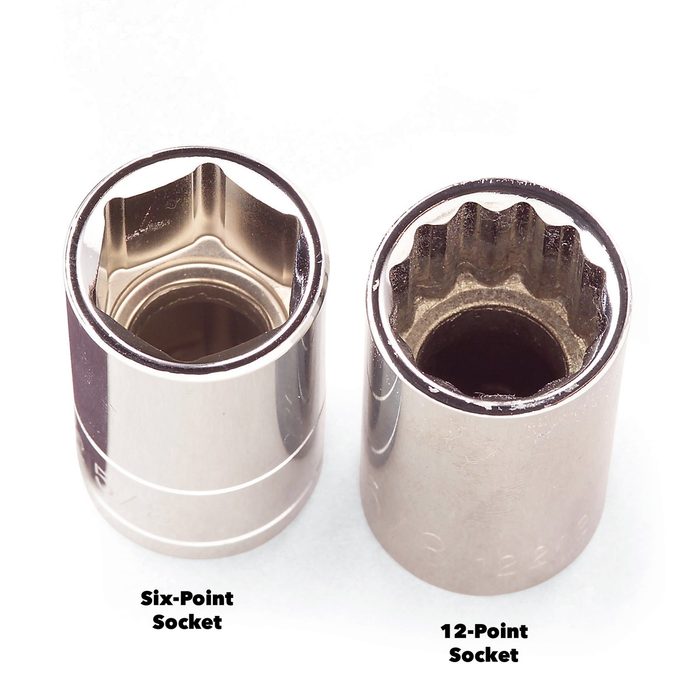

 Removing Corvair cylinder heads can sometimes be a real pain! I wrote some comments about this on the CORSA Facebook Web site, in response to another Corvair fan who was about to tear down his first Corvair engine (dirty and well-worn) and was asking for some tips. I felt that what I wrote might be useful here too, so, for what it's worth, here it is...
Removing Corvair cylinder heads can sometimes be a real pain! I wrote some comments about this on the CORSA Facebook Web site, in response to another Corvair fan who was about to tear down his first Corvair engine (dirty and well-worn) and was asking for some tips. I felt that what I wrote might be useful here too, so, for what it's worth, here it is...
One engine dis-assembly problem area I discovered in my first engine tear-down was with the upper cylinder head nuts (above the valve cover area and under the intake manifold). Years of exposure, heat and rust can make them hard to remove. The heat can also soften the metal, and the nut can easily "round off" if the socket slips. Once the flat surfaces round off the nut it is very hard to remove!

I recommend using a good-quality six-sided socket to remove these nuts, rather than a 12-point socket that has less surface-area to "grab" each flat surface on the head nuts. The latter 12-point sockets are more-likely to slip or damage the soft nuts and round them off.
A six-point socket usually gives a better grip on a bolt head than a 12-point socket.


If a nut does become damaged, I've found two methods to remove the damaged nut. Both methods will destroy the stud that protrudes from the engine case, so that stud will later have to be removed and replaced. Since access to most of these nuts is limited under the intake manifold, it is hard to split the nut and chisel it off with a hammer and chisel. However, you can try center-punching the center of the stud (to guide the drill bit and keep it centered when you start drilling), and then using a drill bit that is about the diameter of the stud to drill-out the center of the stud within the nut. (Sometimes it might work better if you start with a smaller drill bit to drill a "pilot hole", and then move up to a drill bit that is approximately the same diameter as the stud threads.) Once you have "hollowed-out" the material within the center of the nut (to the depth of the nut) a chisel can be used to knock off the nut from the end of the damaged stud. The other method of removal uses a hacksaw blade. (A hacksaw frame will not fit in the cutting area near the cylinder barrel). Tape one end of the blade to protect your hand, and perhaps wear a protective glove. Then cut the stud where you can get to it in the area between the cylinder head and the engine cases. A whole-lot of short strokes with the hacksaw blade will (eventually) cut through the stud to allow you to finish removing the head. Once the head and cylinder barrels have been removed, the damaged stud can be carefully extracted and unscrewed from the cases with a stud removal tool. Cutting the stud or drilling and chiseling the nut is no real fun, so try to carefully remove each nut with a six-point socket in the first place and hopefully you will be able to remove all of the head nuts without damaging them. Using new, high-quality head nuts for reassembly later might also be a good idea!
Another contributor wrote: "As for Brad's comments and suggestions on the head nuts- these were a complete PITA to get off on my car. I removed the head while it was still in the car, making the task all the more difficult. I ended up hammering them w/a 3lb. sledge and various chisels, splitting them. DO THIS RATHER THAN LETTING THE HEAD STUD TURN! They tell you that only if no other choice exists or your stud breaks, as mine did, do you remove these head studs. Let the nuts soak in PB blaster and Kroil for a few days, reapplying every few hours. As for all the parts,- 'tag'em and bag'em' -DO THIS, because you will for sure forget where stuff went. Good luck"
My final comment was as follows:

It's just a theory, but when removing the heads it might help to remove the lower row (under the rocker arms) before removing the upper row of nuts. This MIGHT have the effect of reducing tension on the upper row by eliminating the torque and tension on the lower part of the cylinder head FIRST. This might have the effect of reducing tension on the upper row of nuts by allowing the head to tilt just slightly -- forced by the already existing tension on the upper row. This might make it easier to remove the upper nuts, if less tension is being applied against the threads on top. Once the lower row has been removed, use a six-point socket to carefully remove the upper row of nuts. (The lower row is usually easier to remove because they are made of a hardened steel and are larger in size than the top row. Also, there will be no rust to deal with on the lower row.) You will need a deep, six-point socket for the bottom row.
 NOTE: Heat-treated replacement nuts, acorn cap nuts, and anti-seize compound are all listed on the following Clark's Corvair Parts online catalog page (13).
NOTE: Heat-treated replacement nuts, acorn cap nuts, and anti-seize compound are all listed on the following Clark's Corvair Parts online catalog page (13).
 https://ssl.corvair.com/user-cgi/catalo ... ow_page=13
https://ssl.corvair.com/user-cgi/catalo ... ow_page=13

 1966 Corvair Corsa Convertible
1966 Corvair Corsa Convertible
